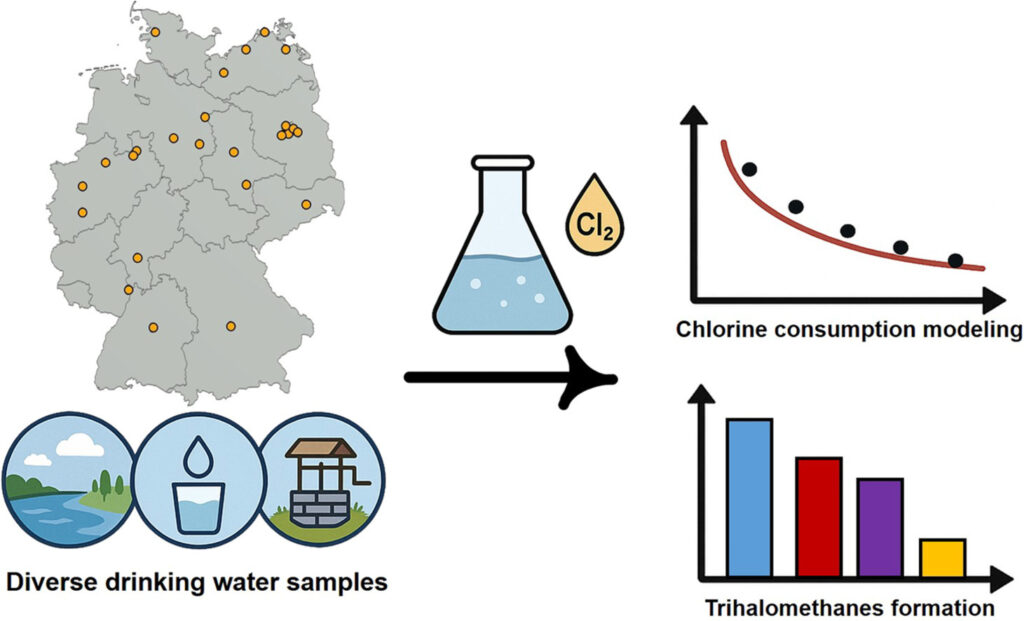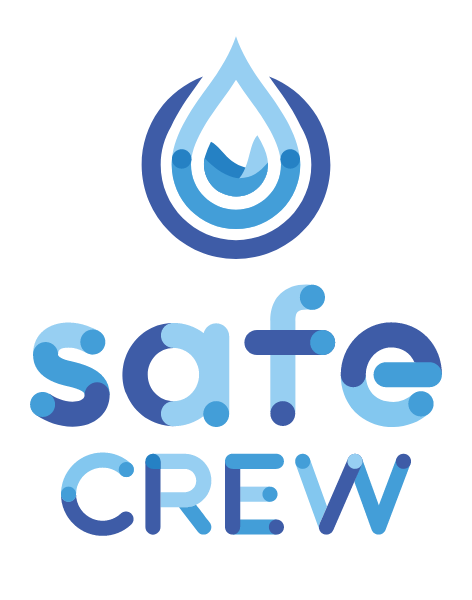The publication “Investigating chlorine consumption through semi-mechanistic modeling and its implications for trihalomethane formation: A comparison of diverse drinking water” authored by Ehsan Ranjbar et al. from SafeCREW partner UBA, presented results on the modelling of chlorine consumption and DBP formation in disinfected drinking water samples.
Drinking water disinfection with chlorine is used for the inactivation of microorganisms in many regions. However, chemical reactions between chlorine and natural organic matter and inorganic compounds can result in unwanted formation of disinfection by-products (DBPs). The UBA researchers worked with non-chlorinated tap water from different regions of Germany. They chlorinated the samples in the lab to evaluate the chlorine consumption and the formation of DBPs. The observed correlation between ultra-violet absorption and chlorine consumption was used in a mathematical model. This model could well predict chlorine consumption over time. The model can be used to design chlorine booster stations in water distribution. The formation of trihalomethanes (THMs) was analyzed and revealed varying levels of THM.

Highlights
- Most tap water samples showed rapid chlorine consumption within 2 h of dosing.
- UV254 absorbance showed strong correlation with chlorine consumption.
- Predictive model accurately described chlorine consumption over time.
- Trihalomethane levels varied widely in drinking water samples in Germany.
Read the publication here:
Full citation:
Ehsan Ranjbar, Dominik Kaczmarek, Hamed Khorasani, Aki Sebastian Ruhl,
Investigating chlorine consumption through semi-mechanistic modeling and its implications for trihalomethane formation: A comparison of diverse drinking water, Water Research, Volume 288, Part A, 2026, 124673, ISSN 0043-1354, https://doi.org/10.1016/j.watres.2025.124673.
(https://www.sciencedirect.com/science/article/pii/S0043135425015763)
© 2025 The Authors. Published by Elsevier Ltd.
